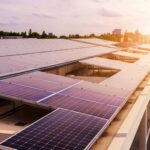It’s the weekend! Kick back and catch up with these must-read articles from around the web.
A Wartime Imperative to Speed Up Decarbonization (Bloomberg) Russia’s invasion of Ukraine has changed Europe’s landscape when it comes to energy security, trade, and deep decarbonization. When I first wrote about this two weeks ago, I called it “The shock of the old, and the promise of the new.” Another way to consider the change is as an open window — specifically the Overton Window, a model for understanding the range of ideas the public is willing to consider and accept. That window is capable of shifting, sometimes dramatically, allowing acceptance of ideas that might have previously seemed outlandish.
Largest Federal Utility Chooses Gas, Undermining Biden’s Climate Goals (The New York Times) The nation’s largest federally owned utility plans to invest more than $3.5 billion in new gas-burning electric plants, despite President Biden’s commitment to swiftly move away from fossil fuels and eliminate greenhouse gases from the power sector in a little more than a decade. The Tennessee Valley Authority, which provides electricity to nearly 10 million people across the Southeast, is replacing aging power plants that run on coal, the dirtiest fossil fuel. But critics say substituting gas for coal would lock in decades of additional carbon dioxide emissions that are heating the planet and could be avoided by generating more electricity from solar, wind or another renewable source.
Webinar: Energy Storage & Demand Response – A Lucrative Combination (Enel X) Wednesday, March 23, 2022, 2:00 PM Eastern Daylight Time. As the energy grid continues to change, grid operators are rewarding energy users who are flexible with their energy use. Battery energy storage systems make flexibility easier. At their simplest, batteries allow users to store energy when prices are low and then use that stored energy when prices on the grid are high. But to maximize revenue, energy storage can be used in tandem with grid services like demand response. Optimized energy storage systems balance a variety of regulatory requirements and value streams for larger savings and earnings. Join our upcoming webinar featuring experts from Enel X as they discuss how energy storage and demand response create value, both individually and together. REGISTER HERE
How better data can help carbon-belching buildings reduce their impact (Fast Company) In the fight against climate change, buildings have some weight to pull. They’re responsible for an estimated 74% of electricity consumption in the U.S. and about a third of the country’s greenhouse gas emissions. Bringing those figures down—whether by reducing electricity usage or improving energy efficiency—would have a measurable impact. A year-old company called nZero has a way for buildings, and many other energy users, to do both of those things. The solution, according to the company, is all about managing the time of day energy gets used.
8 Key Steps For States To Prepare For The EV Charging Boom (CleanTechnica) After a century of dependence on oil, we are in the midst of a dramatic transformation of our transportation system. This transformation will have huge benefits for our environment, our communities, our national security, and our economy. The federal Infrastructure Investment and Jobs Act (IIJA) also known as the Bipartisan Infrastructure Law, will invest billions of dollars in charging infrastructure nationwide over the next five years. Most of this funding will flow through a $5 billion formula program called the National Electric Vehicle Infrastructure corridor charging program (NEVI) and through a $2.5 billion discretionary grant program.
Webinar: Managing Fleet Electrification – Real-life insights from GM, Houston, Portland and Genentech (eIQ) Wednesday, March 30, 2022, 2:00 PM Eastern Daylight Time. We’re seeing an explosion in the transition to Fleet Electrification with new EV models, billions allocated to manufacturing investments, new state and federal incentives, growing charger networks, and utility programs. But the decision process for fleet leaders remains complex as both private corporations and public entities struggle to manage these variables while protecting the operational reliability of their vehicles – and their bottom line. This webinar will bring together a panel of experienced EV experts from General Motors, Evolve Houston, and the City of Portland, Oregon, who will share real-life strategies and learnings in a discussion with Yann Kulp, co-founder of eIQ Mobility the leading Fleet EV Advisory provider in North America. REGISTER HERE
Kauai Quit Using Oil To Produce Most Of Its Electricity Years Ago. That’s Paying Off Now (Honolulu Civil Beat) In 2008, Kauai’s electric utility set an aggressive goal to power half the island with renewable energy. The plan was so ambitious that no one knew exactly how it could be achieved. At the time, plantation-era hydroelectric plants accounted for about 8% of the island’s electricity production. The rest was powered by foreign oil. It was also an expensive proposal. Solar technology was unaffordable for most homeowners back then and utility-scale solar didn’t exist yet in Hawaii. But Kauai Island Utility Cooperative’s drive to untether the electric grid from fossil fuels was strong, rooted in a community-driven sense of duty to limit carbon emissions that contribute to climate change and a desire to shield Kauai from global oil market volatility.
NULL




